#001 Which size Indian Clubs should I buy first?
This has to be one of the most frequently asked questions I receive on a regular basis.
Which size Indian Clubs should I buy first?
To answer this question I have drawn on my personal experience and mistakes and have put together this information to help you choose a pair of Indian Clubs making sure that you have chosen the right pair of Indian Clubs for you as the wrong selection will have a negative impact on your ability to swing clubs correctly.</p
My first pair of Indian Clubs
Here is a quick outline of how I got my first pair of Indian Clubs. I found a book called ‘Indian Clubs’ written by GTB Cobbett and AF Jenkin and published in 1905.
The book contained a template for making Indian Clubs. I decided to find a local woodturner to make me a pair. My first clubs were 26” long and weighed 2.5lbs each. Little did I know that I was embarking on a huge learning curve. I started to swing the clubs and made reasonable progress, but there was a problem, a big problem.
A big problem
I quickly discovered that my clubs were too long and too heavy. This meant that I had problems executing very basic movements.
Which is why it is so important for you to know which size Indian Clubs you should buy first?
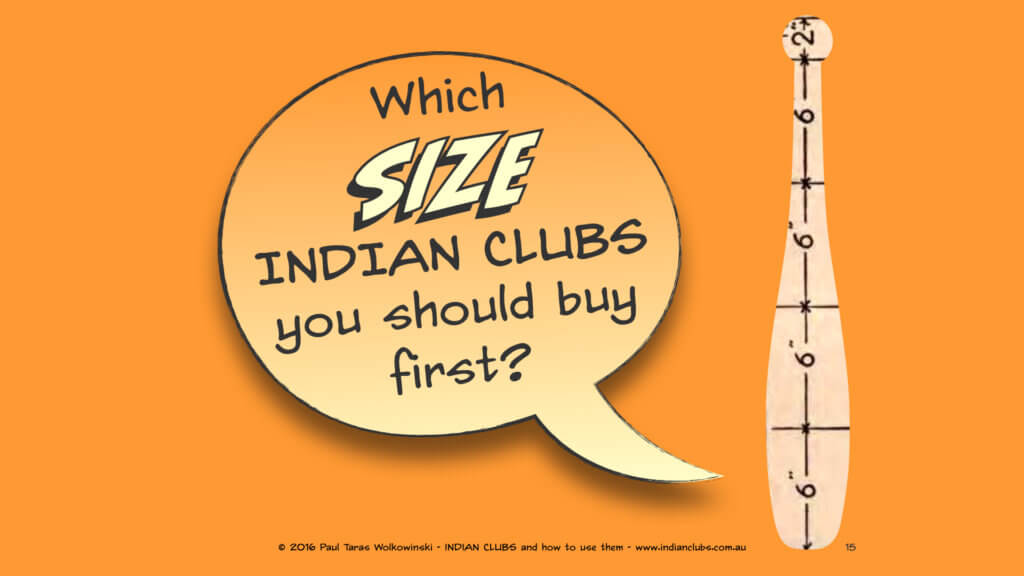
Indian Clubs are relatively lightweight as they are swung in both open and closed arm style.
Clubs weighing one or two pounds each are heavy enough for you, or clubs that weigh about half or one kilo each are perfect. The ideal club length should be in the range of 15” to 20” inches or 35cms to 51cms, depending on the weight of the club.
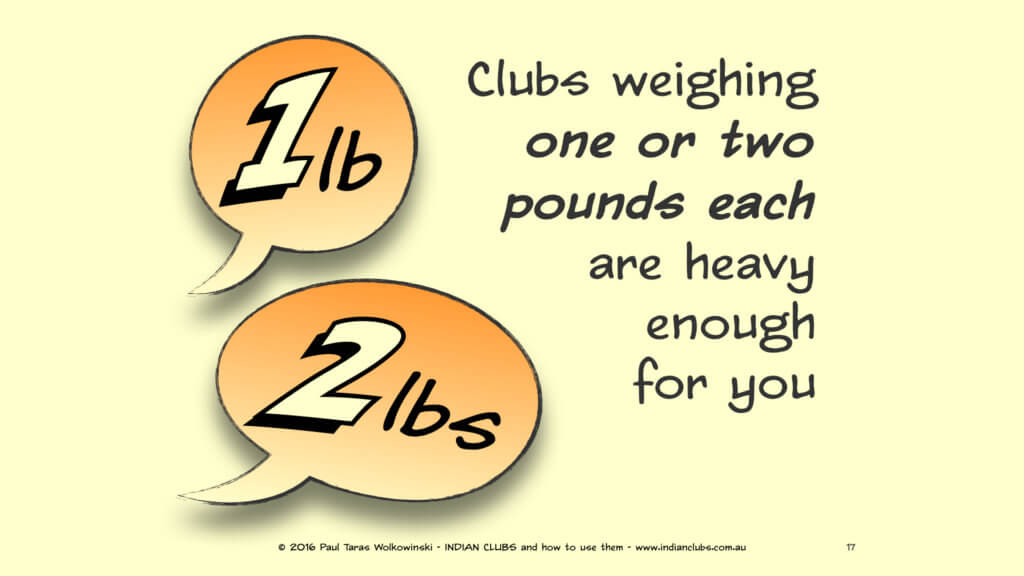
Your current strength and fitness
The choice of Indian Clubs should be made regardless of your current strength and fitness. No matter what weights you currently squat, bench press or deadlift. No matter how incredibly flexible you are. Clubs weighing one or two pounds each are heavy enough for you.
The choice of Indian Clubs is dependant on your size and physique. Indian Clubs form an extension of your arm by adding length and weight they simply make your arms longer and heavier.
Indian Club Swinging can be described as circular weight training that exercises your shoulders, elbows, wrists and fingers in ways not possible with traditional linear resistance training and yoga.
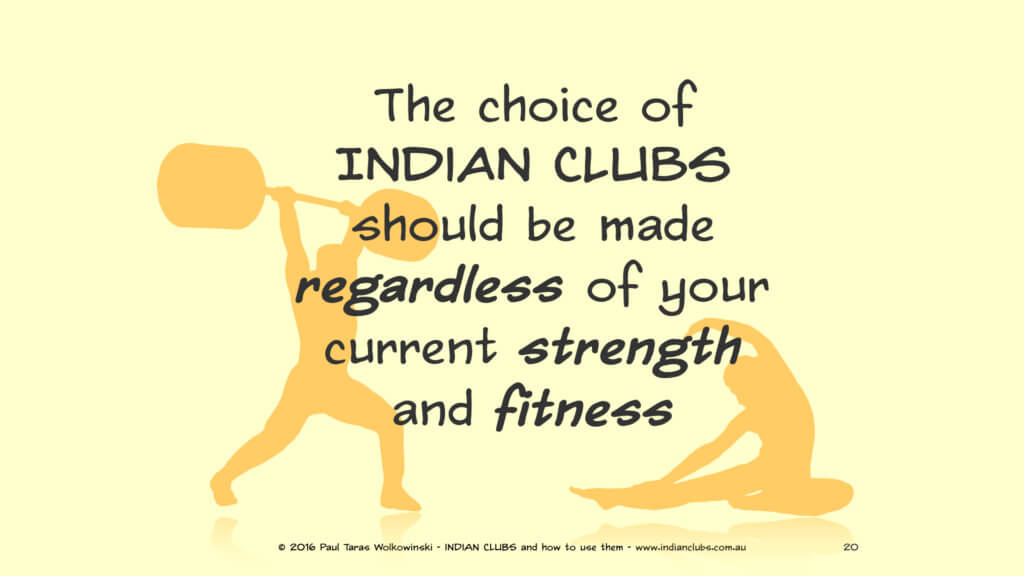
Conditioning and mobility
Indian Clubs are a conditioning and mobility tool that will complement your other training disciplines.
Seek professional medical advice
Now for some serious stuff I’m talking about existing injuries, Indian Clubs can help, but if you have an existing shoulder, elbow, wrist or back injury, in fact, if you suffer from any form of injury. You must seek professional medical advice before using Indian Clubs.
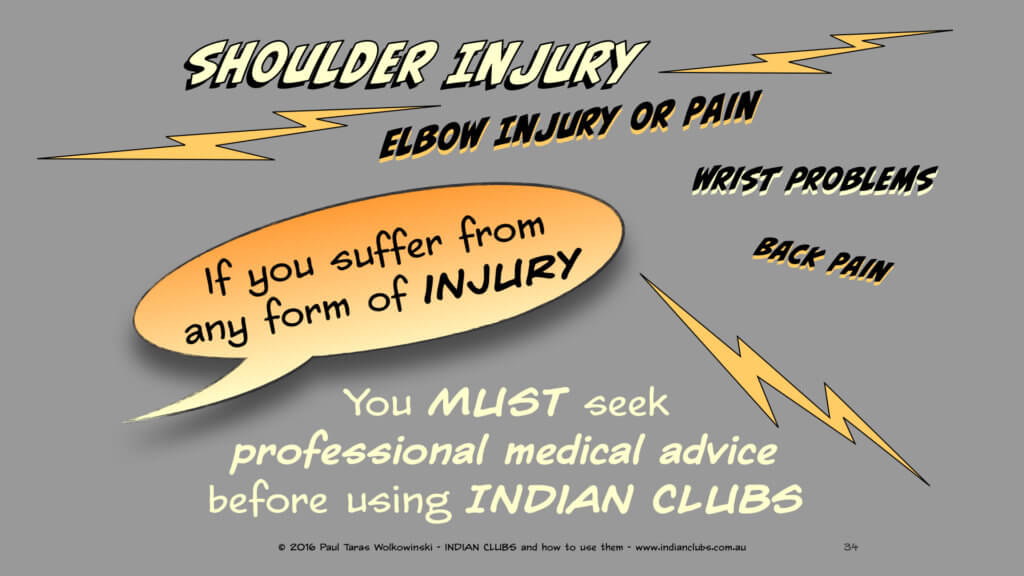
Heavy Clubs
Many people often ask when they can start using Heavy Clubs. Swinging heavy weights is not the prime objective of Indian Clubs exercise.
Are you are thinking of 5lb, 10lb, 15lb or 20lb clubs?
Don’t be seduced into buying and using clubs that are too heavy for you, as you may injure yourself as a result. It is not the exercise that will hurt you, it is the weight of the club.
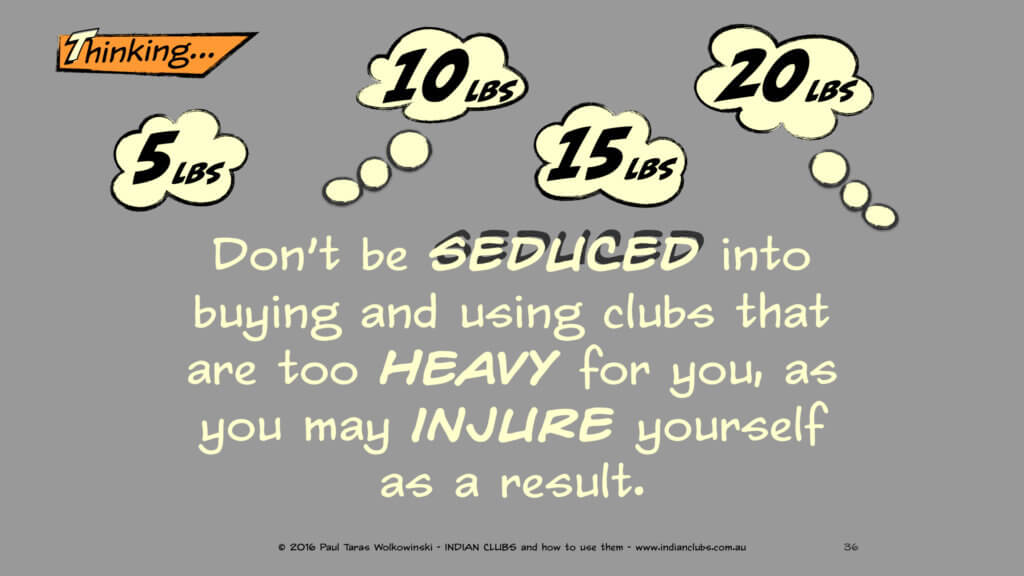
Master and perfect your technique
However, once you have mastered and perfected your technique with lighter clubs you can move to use heavier clubs weighing three pounds, and you will be surprised how demanding 3lbers can be. When you are ready to increase the weight of your clubs, make sure you do it in small increments.
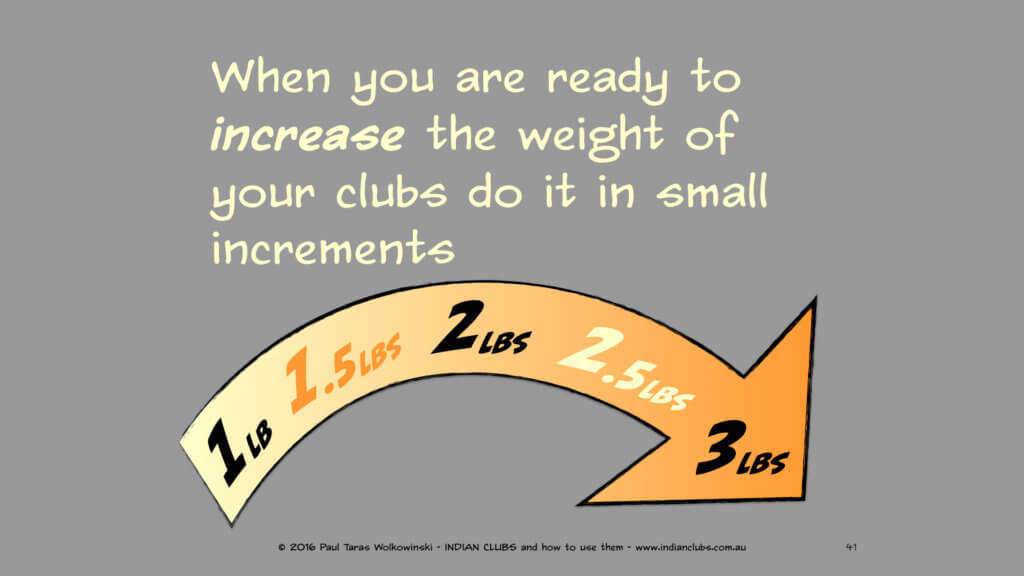
Crash and Knock
Just be aware that you will probably crash and knock your clubs more than once, this happens to all of us, so don’t get precious about your clubs, you should think of the dings and marks as a badge of honour.
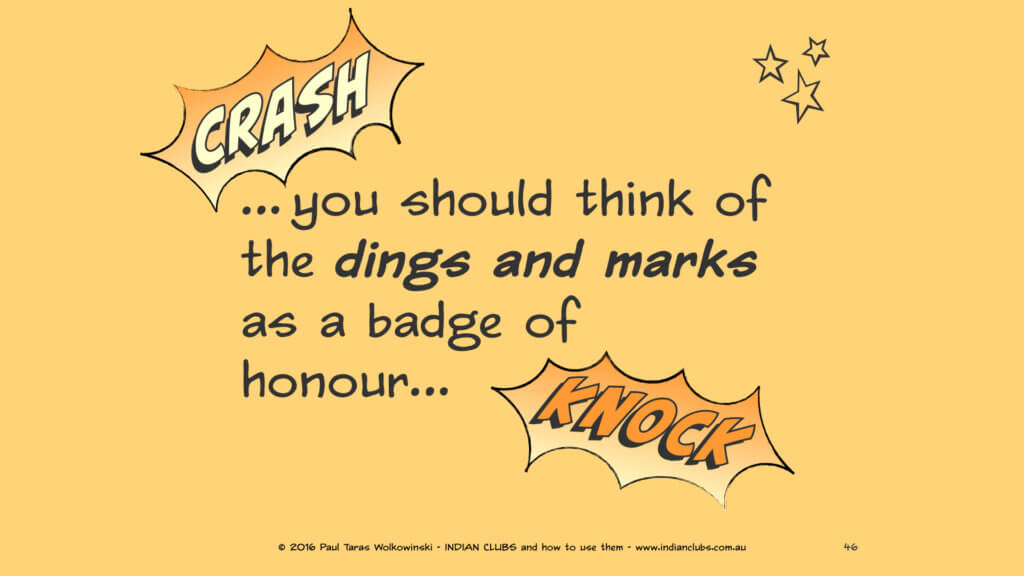
Buying Indian Clubs
You can buy new, old or antique Indian Clubs to use for training. To help you I have put together a list of Manufacturers on this website.
Over the last 150 years, Indian Clubs have been made in a mind-boggling variety of weights and sizes, the list below is intended as a rough guide to help you choose and identify the best clubs for you.
Imperial
- 12” inches 0.5lbs (children)
- 14” inches 0.75lbs (children and ladies)
- 15” inches 1lb (ladies)
- 18” inches 1.5lbs (ladies)
- 20” inches 2lbs (ladies and men)
- 22” inches 2.5lbs (men)
- 24” inches 3lbs (men)
Metric
- 30 centimetres 0.23kg (children)
- 35 centimetres 0.34kg (children and ladies)
- 38 centimetres 0.45kg (ladies)
- 46 centimetres 0.68kg (ladies)
- 51 centimetres 0.91kg (ladies and men)
- 56 centimetres 1.14kg (men)
- 61 centimetres 1.36kg (men)
I hope you found this post useful. I’d love to know if you have any questions. Please leave me a comment below.
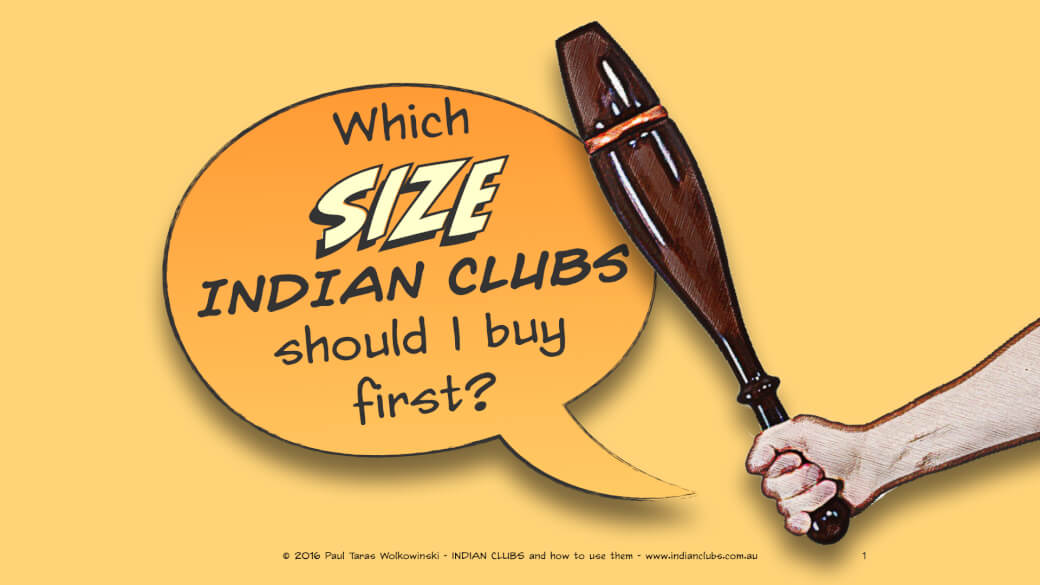

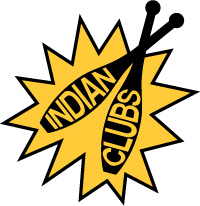
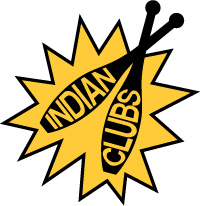
Good Morning, Paul!
I’ve enjoyed this post very much, man! And, you know, initially seduced by the lure of swinging heavy weight, I am now fully appreciating the benefits (and logic!) of training with much lighter clubs!
This new explanation, with its cool explanatory images, arrives at the most appropriate time for myself and my buddy, Julio!
Thank you for sharing your insights and knowledge.
Warm regards,
Frank
Hi Frank,
Thank you for your comment. I did exactly the same as you when I first started. I think that no one really understands the Indian Club until they start to swing it.
I’m glad you liked the explanatory images, it is a something new I’m playing with and developing.
Yours swingingly
Paul
Excellent contribution, many thanks Paul. I always emphasise that, whilst muscles build very quickly in response to exercise load, ligaments, tendons and cartilage have a more limited blood supply and so do not respond to exercise nearly as quickly. Indian clubs load ligaments, tendons and cartilage through a much fuller range of movement than most other forms of exercise, and so it is pivotal (pun intended!) that beginners, and experienced alike, recognise the importance of starting light, keeping light, and progressing size wise slowly (size most definitely isn’t everything in club swinging!). In my classes, I lend out very light clubs (0.6 lb ) and then let people try out 1 and 2 lb a few months later, ahead of any purchase. It is also important for people to appreciate that as participantd progress they will always be cycling through your lighter clubs as they explore new routines and patterns.
Thank you Colin, I started to pen the concept for this video as an email template I could send out, over two years ago. With the aim of providing a comprehensive answer to the many enquiries, I received and continue to receive on a regular basis. Now that the information is published it is available for everyone to see and digest. I really appreciate your comments and insights into why light clubs are so important, and in particular your explanation of limited blood supply to ligaments, tendons and cartilage.
Hola: muchas gracias por compartir sus conocimientos y haberme abierto una puerta a un mundo totalmente desconocido para mí, sigo sus videos con mis compañeros que somos unos 15 y ejercítanos los clubes.
Me gustaría poder saber inglés para poder expresarme mejor
Un fuerte abrazo
Antonio
Hello Antonio, Thank you for your email, I am very happy to help you and glad to hear that you are interested in swinging Indian clubs. We are both very lucky because we have Google translate. Which means that you can write to me in Spanish, and I can write to you in English. So in the future, if you have any questions please do not hesitate to ask, and I will answer the best I can. So to finish my reply I will now convert this message to Spanish and hope you understand it. Best regards. Paul
Hola Antonio, Gracias por su correo electrónico, estoy muy feliz de ayudarle y encantados de saber que usted está interesado en hacer pivotar mazas. Los dos somos muy afortunados porque hemos Google traducir. Lo que significa que se puede escribir a mí en español, y me puede escribir a usted en Inglés. Así que en el futuro, si tiene alguna pregunta, por favor no dude en preguntar, y yo te responderé lo mejor que pueda. Así que para terminar mi respuesta ahora voy a convertir este mensaje a español y espero que lo entienda. Atentamente. Pablo
Thanks for the free ebook. My brother is a professional woodworker and could make these for me. Do you have any suggestions as to which wood provides the weight for the dimensions you give, and have you an approximate diameter for the widest point?
Thanks again – Jim Clough
Hi Jim, You need to use a medium hard or a hard timber to make Indian Clubs. Regarding club diameter, go for 80mm to 90mm. Hardwoods have different densities in different parts of the world, so it’s a bit hit and miss, as to what weight you will achieve with the first pair of clubs you make. Yours in club swinging. Paul
Dear Paul,
I’ve enjoyed your videos and sage advice on the topic of club swinging. I trained with free weights off and on most of my adult life (I’m 76 now). I took up club swinging about 2 1/2 years ago, and at this time the clubs and kettlebells are the basis of my fitness regimen. I have acquired clubs weighing 1, 2.2, 3.4 and 6.5 pounds. (The 6.5 pounders were supposed to be 5 pounds). My question is: Is it somehow improper technique or “bad form” to switch to a different pair of clubs during a workout? I only rarely use the one-pounders; about half the swings I do with the 2-pounders, but others, that I find unchallenging with 2 pounders, I prefer to perform with the 3+ pounders, and a few, when I’m feeling ambitious, the 6+ pounders. With just about all other forms of resistance exercises, the weights used are varied with the movement or exercise, so why should Indian clubs be any different? Your views and comments would be most appreciated.
Cordially, Jan Libourel
Hi Jan, Thank you for your message. It is certainly not bad form to change clubs during a workout, I do it all the time. I think it worth mentioning that the 1lb clubs are great for working out a new swing sequence or manipulation, and once memorised I would step up and use 2lb clubs and possibly the 3lbs. With your experience, you are probably aware that different club weights present a variety of swings. And I personally like to explore these. When I was going through chemo last year I was very weak and my one pound clubs were a godsend, meaning that I could continue training, and now I have progressed back to 2lbs and 3lbs. During this time I discovered the art of elevating clubs overhead improving my range of motion, and I now use this concept with heavier clubs. Yours in club swinging. Paul
I’ve been following your videos almost 1 year. and i think this is the best way to fix shoulder problems. now i will start doing it too. i have clubs. but i couldnt find basic movement videos on https://www.indianclubsacademy.com/ site and also on youtube.
Did you register at the Indian Clubs Academy website? There are seven videos there to help you get started. You can also visit https://indianclubs.com.au/indianclubs/indian-club-tutorials/
Hi Paul,
I just recently found your material and find it very informative.
Just FYI, I did register at your Indian Clubs Academy website and cannot find the videos you describe. I’ve gone through the lessons with the still pics in them but have not found any links to video demonstrations of any of it.
Sorry, I jumped the gun. I found the tutuorials. Thanks for the wondferful information.